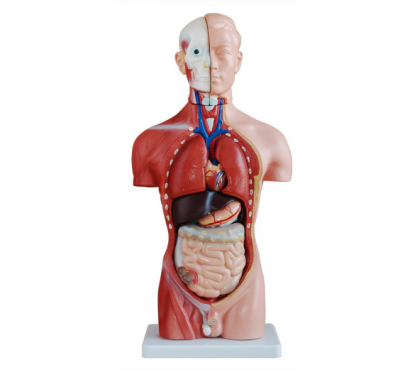In the vast field of medical education, male trunk anatomy model is not only the carrier of theoretical knowledge, but also an indispensable tool to train medical students' clinical intuition. This intuitive teaching aid, with its unique advantages, plays an important role in shaping the keen insight of medical students in future clinical practice.
Firstly, the anatomical model of male trunk provides medical students with an observation and learning platform close to reality. On the model, students can clearly see the interrelationship and spatial layout of various systems such as bones, muscles, blood vessels and nerves. This intuitive visual experience helps students to construct three-dimensional images of the human body structure in their minds, laying a solid foundation for the rapid identification and understanding of complex physiological and pathological phenomena in clinical practice in the future.

Secondly, through repeated touch and manipulation, medical students can gradually develop a "feel". In clinical practice, doctors often need to assess the patient's physical condition through palpation, such as judging muscle tension, looking for tender points or lumps. The use of models is an effective way to train this kind of hand feeling. By practicing palpation skills repeatedly on the model, medical students can gradually familiarize themselves with the tactile differences of different tissue structures, thereby improving their accuracy and sensitivity in clinical practice.
In addition, students are provided with the opportunity to simulate clinical scenarios. Teachers can set different pathological changes or surgical incisions on the model according to teaching needs, and guide students to analyze and discuss. This simulated training not only helped students consolidate their theoretical knowledge, but also gave them the opportunity to practice clinical thinking and decision-making skills in near-real situations. In many simulated practices, the clinical intuition of medical students will be gradually cultivated and improved.
To sum up, male trunk anatomy model plays an irreplaceable role in cultivating clinical intuition of medical students. It helps medical students build a deep understanding and keen perception of the human body structure by providing intuitive learning experiences, training palpation skills and simulating clinical scenarios. These abilities are not only one of the indispensable skills for medical students in future clinical practice, but also an important cornerstone for them to become excellent doctors.
